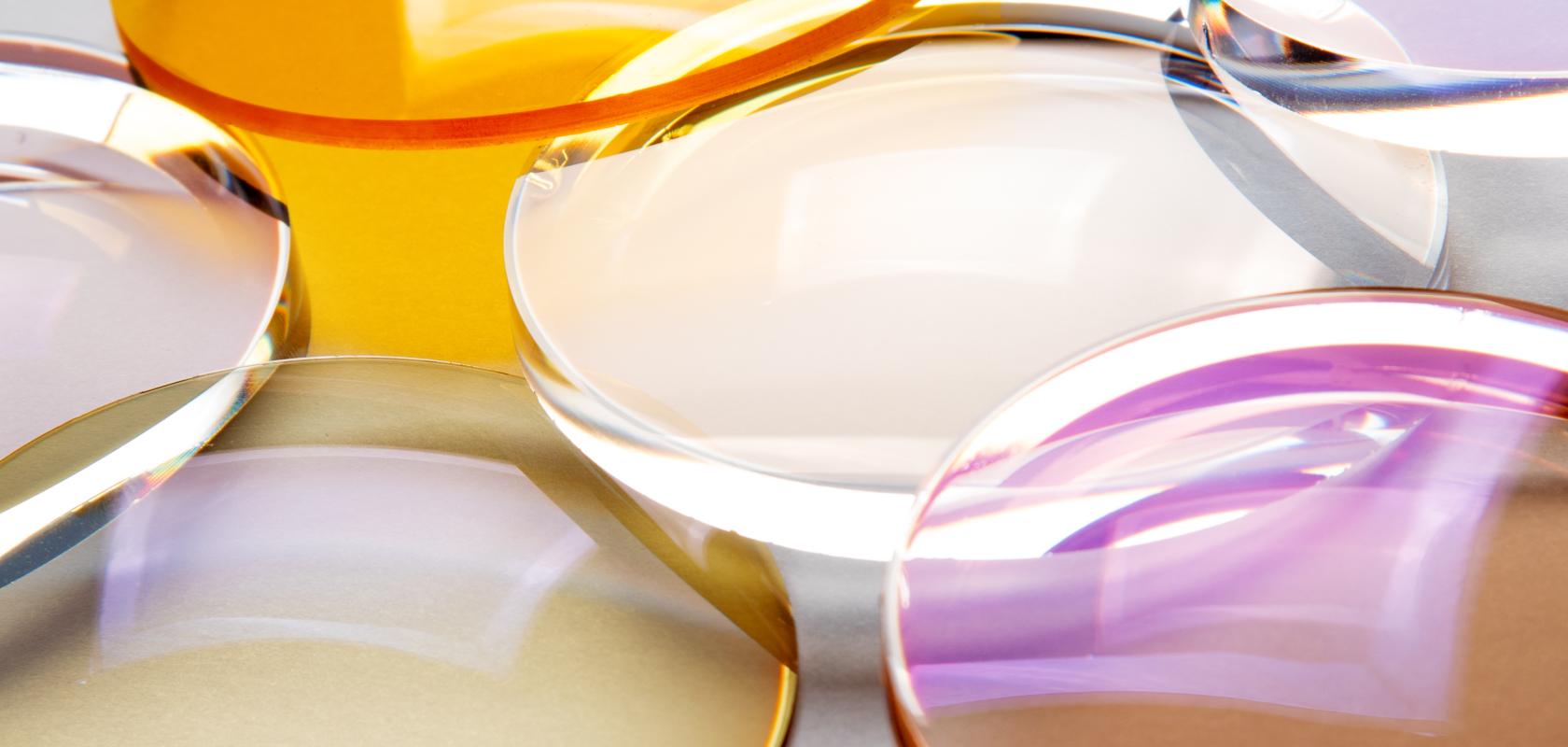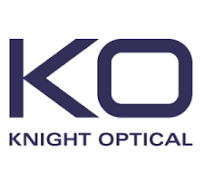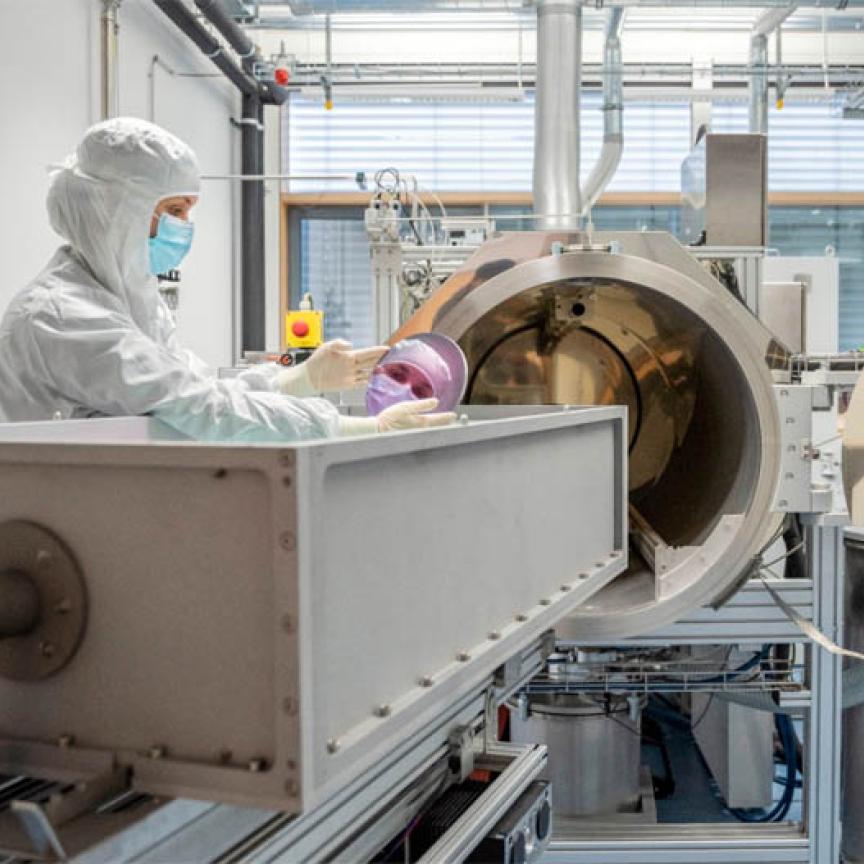The latest optical coatings for 2025

Sphere coloured lenses with anti-reflective coating (Kryuchka Yaroslav/Shutterstock.com)
An optical coating is a thin layer or film of material applied to an optical surface (such as a lens or mirror) to modify its light transmission, reflection, or absorption properties.
Optical coatings incorporate various thin film layers that, together, can strengthen the properties of an optical system. These coatings can be produced using a variety of materials; properties such as the number of or thickness of the layers and refractive index difference direct the performance of the coating.
What are optical coatings used for?
Optical coatings are often used to enhance the reflective property of an optical system, but they can also aid resistance to chemicals or abrasion. Some are used to provide UV resistance, or antistatic, anti-glare and anti-fog properties.

Coating Capabilities for Optical Components by Knight Optical
Knight Optical provides a broad range of coating capabilities for optical components across the ultraviolet (UV), visible, and infrared (IR) spectrums. Our state-of-the-art metrology lab performs individual product testing for various single and multilayer coatings.
We stock an extensive selection of anti-reflection (AR) and mirror-coated custom optics including Beamsplitter, Anti-Reflective coatings, Mirror Coatings, Cold Mirror, Hot Mirror, and more.
Our skilled technicians ensure all our optics meet high-quality standards and your exact specifications. For more information, contact our UK and US teams today and experience true precision, quality and innovation.
SPONSORED BY

Optical coatings are not a new technology. One of the earliest dates back to 1886 and was attributed to English scientist, Lord Rayleigh, who found that the kind of tarnishing that affected the optical glass of the time could potentially provide an advantage. Technical breakthroughs – combined with increased demand from end-users for efficient optical devices – are driving growth in today’s market.
The current market for optical coatings
According to the latest report from Mordor Intelligence, the global optical coatings market, currently valued at $9.47bn, is projected to reach $13.36bn by 2030, growing at a 7.12% compound annual growth rate (CAGR). This growth is driven by increasing applications across multiple sectors.
The report cites anti-reflective coatings as dominating the market with approximately 38% market share, due to their extensive use in solar panels, electronics, and eyewear. But the chemical vapor deposition (CVD) technology leads with 42% market share, because of its ability to provide uniform coating on complex surfaces.

Coating service capabilities from Spectrogon
Spectrogon’s Coating Service capabilities (400-20, 000nm) for OEM customers include:
Antireflection (AR) coatings:
- Single and multilayer coatings;
- Broadband AR coatings;
- Extended BBAR coatings;
- Laser line AR coatings and dual wavelength AR coatings.
High reflective coatings:
- Metallic high reflective coatings;
- Dielectric laser line HR coatings; and dielectric HR coatings.
- Beam splitter coatings: 400-20, 000nm
SPONSORED BY

In terms of geography, the report states that Asia-Pacific is the dominant region in the market, with China holding 41% of the regional share. However, India shows potential as the fastest-growing market in the region with a projected 25% growth rate during 2024-2029.
The electronics and semiconductor segment, says Mordor, leads end-user industries with 24% market share, while the aerospace and defense segment was predicted to grow fastest at approximately 8% annually.
Optical coatings products on the market now
Vendors offering optical coatings products and solutions include AccuCoat, which provides thin-film coatings on polymer, metal and glass components. The company also offers a variety of antireflective, beamsplitter, hot and cold mirror, filter, metallic and custom coatings.
Angstrom Engineering’s Reticle platform gives the ability to create films with high purity, density and uniformity, in a repeatable and automated fashion. This is useful for applications such as anti-reflective (AR) coatings, highly reflective (HR) coatings, coatings for laser diode bars and telecom optical filters, as well as vanadium oxide deposition.
Applied Optics Center (AOC) designs and manufactures thin-film optical coatings for both visible and IR applications, specialising in high-layer-count coatings associated with laser protection optics.
Alluxa is an ISO 9001:2015 certified, ITAR registered manufacturer of high-performance optical filters and thin-film coatings. At the heart is the company’s advanced Sirrus plasma deposition process. Products include the Ultra Series of optical filters and thin-film coatings as well as custom optical filters and thin-film coatings.
Avantes offers a number of solutions that are useful for the coating industry, including proprietary software designed for the needs of this market. The company’s specialist spectrometer has been deployed into multiple thin-film applications. Reflection and transmission-based thin-film measurements are typically done in the 200-1,100nm range and are suited to coatings ranging from 10 nm-50µm.
Berliner Glas produces coatings for different kinds of applications. The spectral range extends from the VUV to the infrared range. Coatings include anti-reflective layers; highly reflective metallic and dielectric mirrors; polarising and non-polarising beam splitters; narrow band filters; edge filters; laser protection filters; layer coatings with high damage threshold and absorption layers.
Cascade Optical manufactures custom vacuum-deposited thin-film coatings. The company offers ion-assisted deposition and low-temperature, low-stress coatings for laser crystals and fibre optics, with prototypes available to production quantities.
Chroma Technology produces optical coatings for demanding applications including biomedical and imaging systems, fluorescence microscopy, aerospace, surveillance, machine vision, industrial inspection for items such as semiconductors, food and lumber, multispectral imaging and chemical analysis.
Edmund Optics has expertise in producing coatings for advanced diagnostic applications, harsh environment imaging assemblies and applications throughout the ultraviolet (UV), visible (VIS) and infrared (IR) spectral regions. Available are anti-reflection (AR) and metallic mirror coatings; a wide range of custom optical coatings are made in internal coating facilities.
Inrad Optics uses a plasma assisted deposition system to produce thin film coatings on optics as large as 60” across. This method allows the company to produce thin films, which it says have higher density, lower internal stresses and higher adhesion than conventional deposition systems.
Iridian Spectral Technology provides optical thin film solutions and coating services to a wide variety of industrial and research sectors. The company is a global supplier for applications in telecommunications, spectroscopy (Raman, fluorescence, flow cytometry), the entertainment industry (filter wheels, glasses for 3D cinema), and optical sensing (Earth-Observation remote sensing, MWIR gas sensing).
Laser Components supplies optics that cover the spectral range from 193nm to 3.0µm. The company also has the facilities to coat its own substrates as well as those supplied by customers, with diameters ranging from 4 to 390mm. The department has five coaters, one of which uses sputter technology, designed for the manufacture of the next generation of lasers.
MLD Technologies produces high-performance optical coatings and components, specialising in the design, development and manufacture of ion-beam sputtered, low optical loss, laser-damage resistant thin films for the UV-VIS-IR spectral region. Applications include lasers, laser devices, nonlinear crystals, medical instruments and other photonic devices.
Materion provides precision dielectric and metal thin film coatings that have excellent spectral performance, environmental stability and substrate adhesion. The company’s multiple coating processes can coat a host of substrates for optical systems applications. Products include anti-reflective, cold mirror and index matched ITO coatings.
Northrop Grumman Synoptics specialises in high laser damage threshold coatings, using the latest thin film coating technologies such as ion-beam sputtering (both conventional and Quasi-Rugate structures) and Electron-Beam coatings, optimised for high laser damage thresholds from 355-2,140nm.
NTT Advanced Technology provides x-ray/EUV optics and coatings; multilayer and total reflection coatings as well as high-reflectivity, narrowband and broadband coatings. The company also offers optics such as filters, dichroic mirrors and beam separators for the x-ray/ EUV region.
OptoSigma supplies a wide range of optical thin film coatings. These are often provided as part of the optical component, but may also be ordered separately to apply to an uncoated element. Applications include bio-tech dichroic filters, bio-medical high laser damage threshold AR or HR coatings for laser delivery systems and space-rated optics.
Quantum Coatings boasts a large in-house optical coating capability, allowing the company to meet requirements for optics up to 2000lbs and 1.5m in diameter. Its thin film coatings have been used in applications including: avionics, aerospace, military and medical.
Semrock (a subsidiary of Idex) manufactures optical filters for the life science industry. All filters coated in the company's sophisticated sputtering deposition chambers are tested extensively both in-situ and postproduction to ensure performance and quality, and can be scaled easily from prototype to volume production with no change in performance.
Spectrogon’s coating service capabilities span 193-20,000nm, including anti-reflection coatings in single and multilayer, broadband AR coatings, extended BBAR coatings, laser line and dual wavelength AR coatings, UV laser coatings and high reflective coatings. The company also offers metallic high reflective coatings.
Zeiss International provides high-quality coatings, simulating and optimising the process in advance (including coating properties) to achieve an optimal result; from the thickness distribution to the coating stress to the scattered light. The standard range includes more than 250 optical coatings.
This is not an exhaustive list. If you provide optical coatings and would like your company to be included, please let us know.

